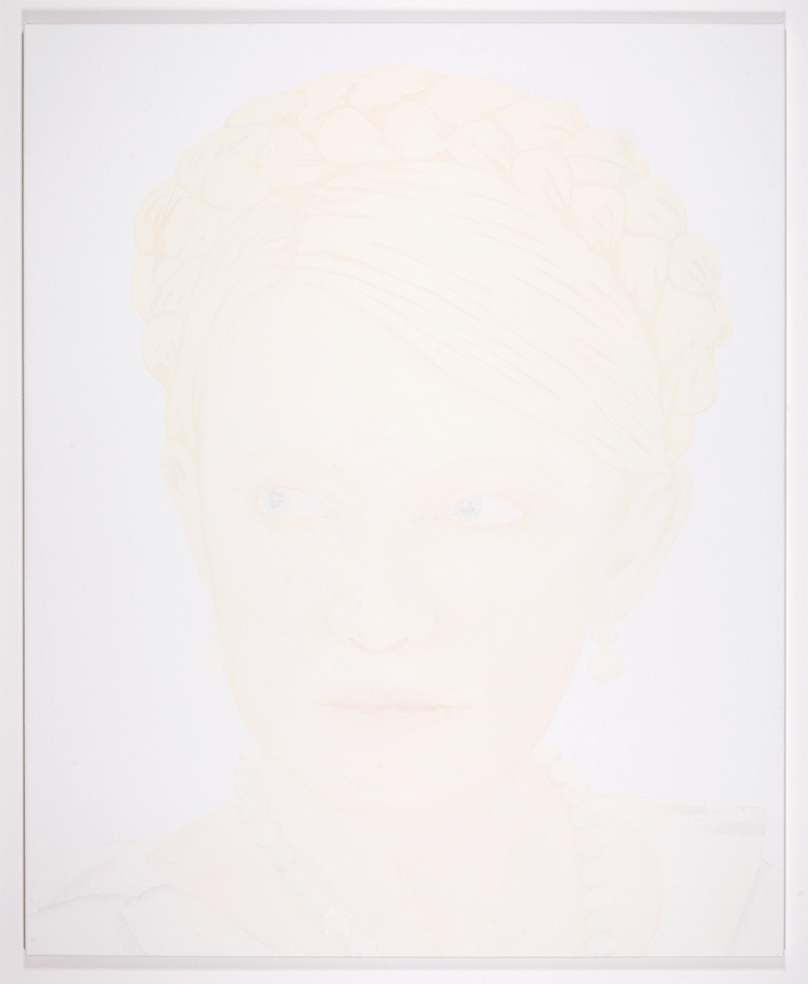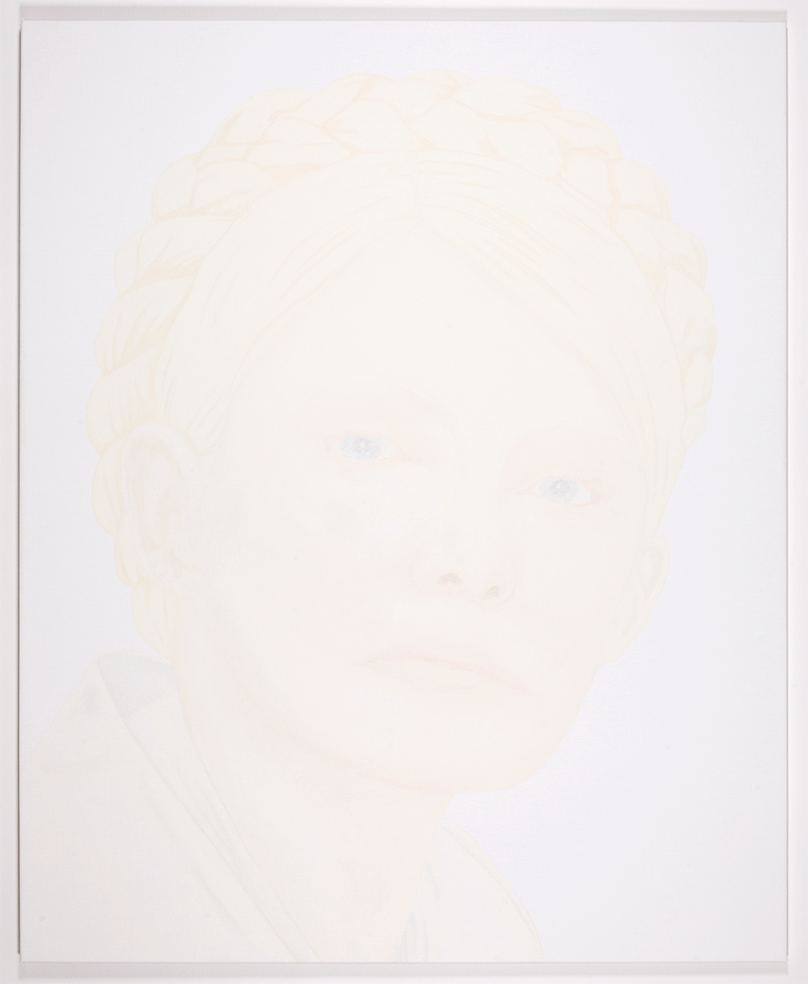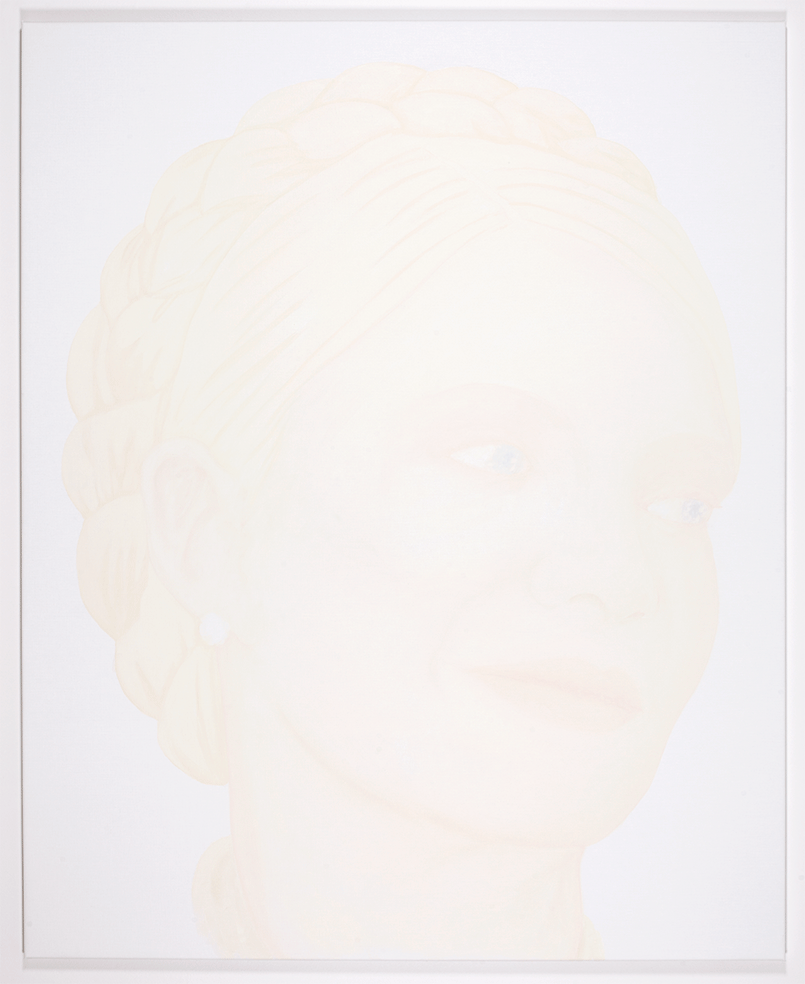Yulia
Oil on canvas, 2015, (3) x 160 x 130 cm
Series of paintings after photographs of Yulia Tymoshenko
From a discussionbetween Birgir Snæbjörn Birgisson/BB and Mika Hannula/MH – 22. 9. 2014
MH: Yulia, so far 3 large paintings, and 9 small ones. Background – why such a politicized figure of the former Ukranian Prime Minister?
BB: Well, she is also like a role model on the top ten list of blondes, with her amazing hairdo. I can’t remember when It first came to me to paint her, but I had intended for several years to work with her image. When I started in 2012 or if it was 2013, she was in prison. That in itself had nothing to do with the act of me painting her, she had been on my mind for a long while, perhaps the timing for finally going ahead was related to her being more on the news – EU trying to put pressure to have her freed from prison or other news related matters on her. As when making another series, the Blond Miss World ones, I just found a series of press images of Yulia and painted after a selection of them. They are portraits of how I see her, not actual portraits of a person but a portrait of and from an image. The difference is important, and the distance between essence and appearance – I am rather painting the image of a beautiful, powerful, corrupt or innocent person – all in the same bag, which makes it interesting. The works are not to be seen as statement on her innocence or guilt, it’s not a question of that – it’s a question how an image functions in our head, making us as participants, stakeholders in the game. What also interests me nowadays is the new platform we stand on when making political art. The lack of trust in the founding organizations of our societies such as government, church or media, drives us to do research on our own, and make our own opinion on the matter. This is of course very difficult when there are no grounds to build on.
MH: How do you then avoid being paranoid or to fall into nihilism? Why to keep on keeping on?
BB: I am, indeed, both paranoid and nihilistic, certain amount of that is unavoidable. It is what drives us, what keeps us going. Because you don’t trust, you keep on searching. But of course, this new platform is not purely negative, it is possible to use in ways that are interesting, new ways of living and learning.
MH: But the image – its purity kind of connotations – of the work is far from being paranoid and nihilistic?
BB: That is true, but the work is not an end result – it tries to push something forward, it is not a statement of a fact. Its materials being vague and weak, it puts more, much more pressure to the act of meeting, the act of seeing the work – which you have to confront, what’s around you. Not necessarily head on but through the door these works allow us to use.


